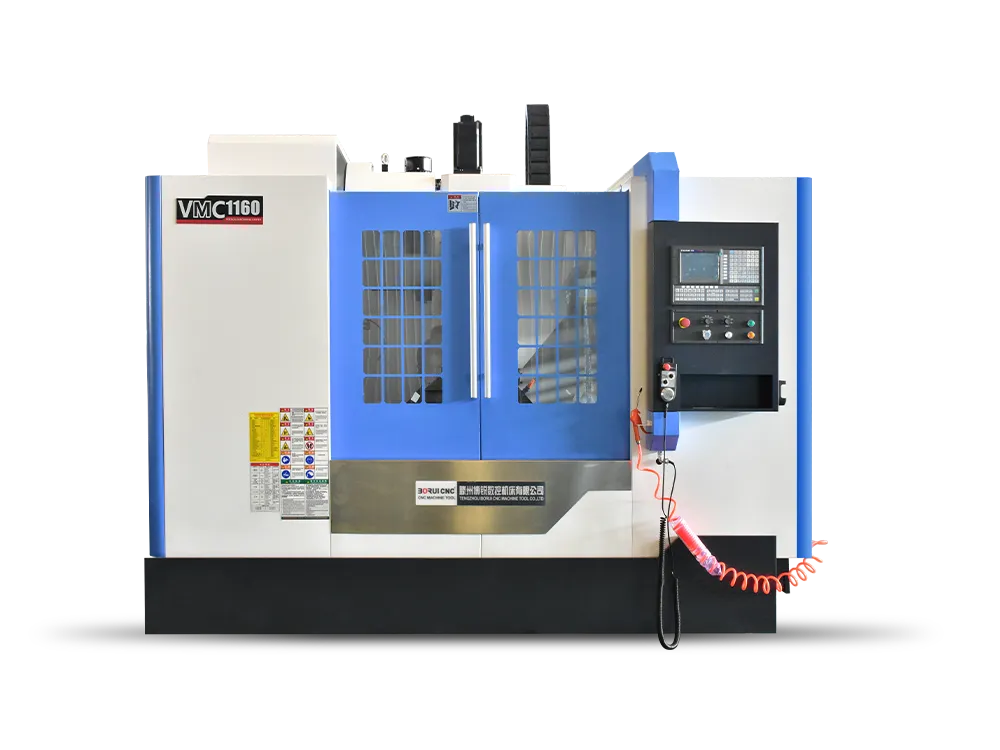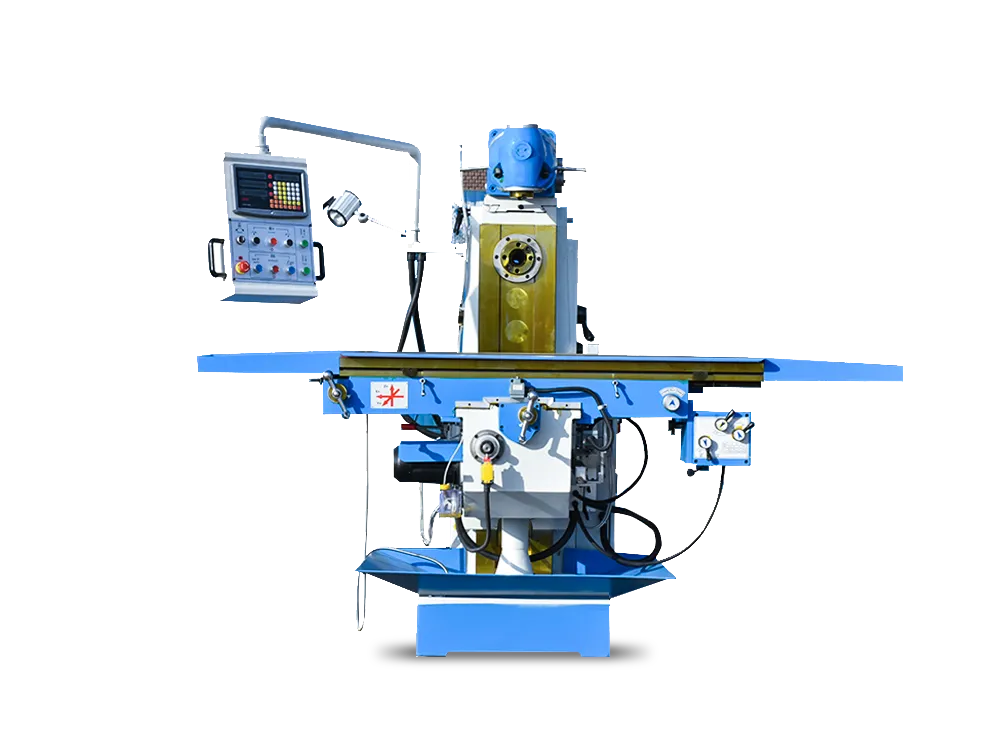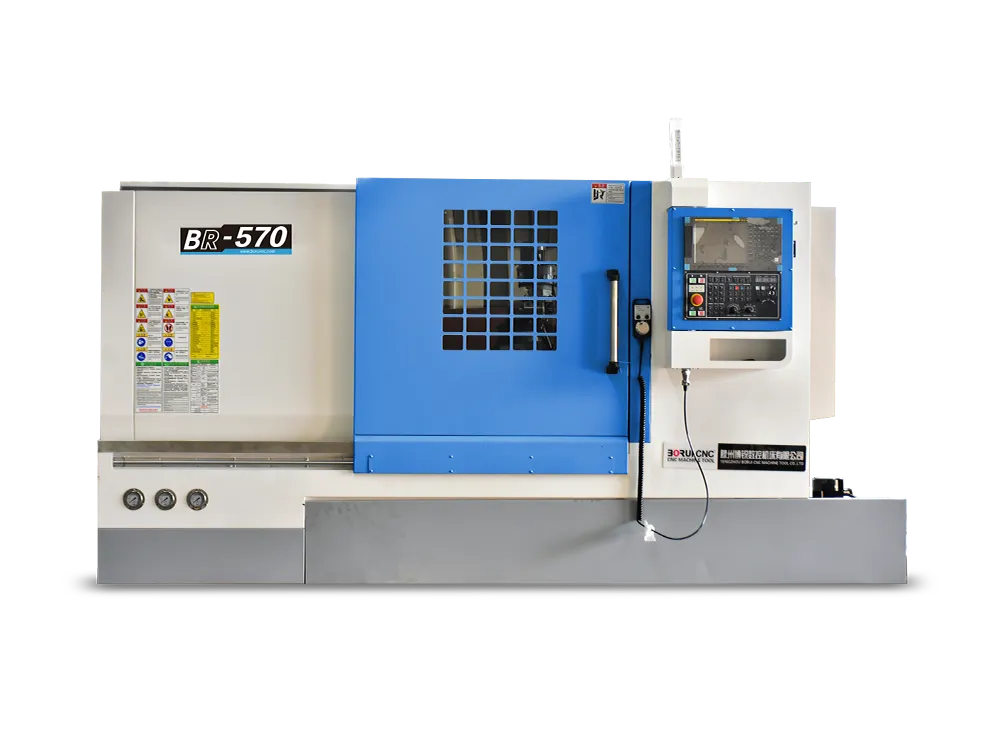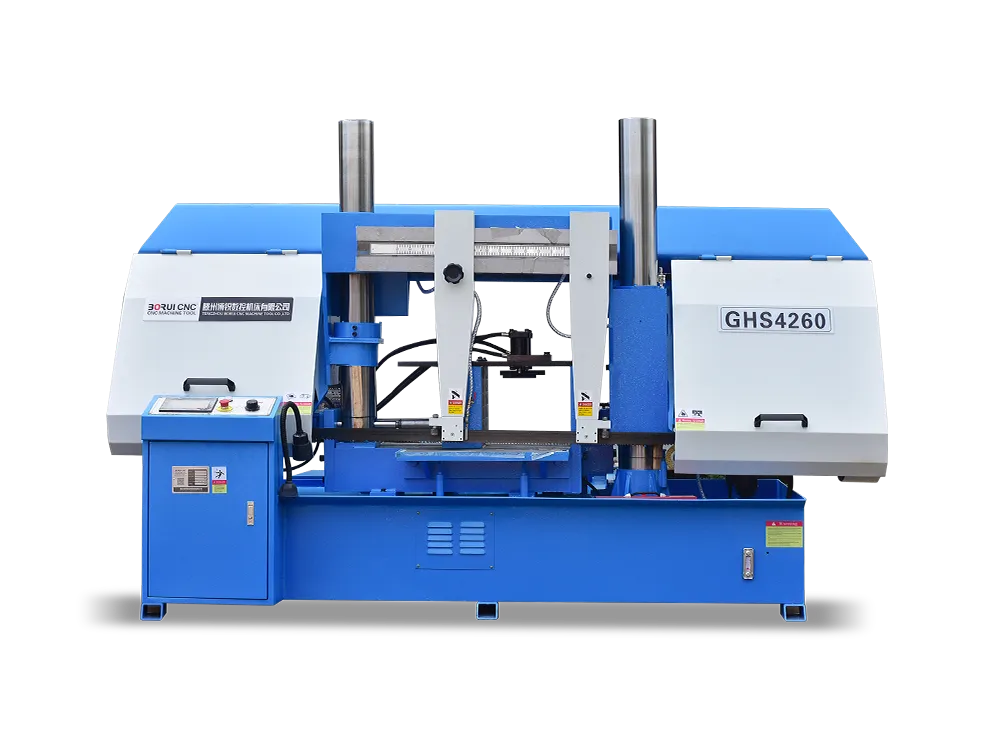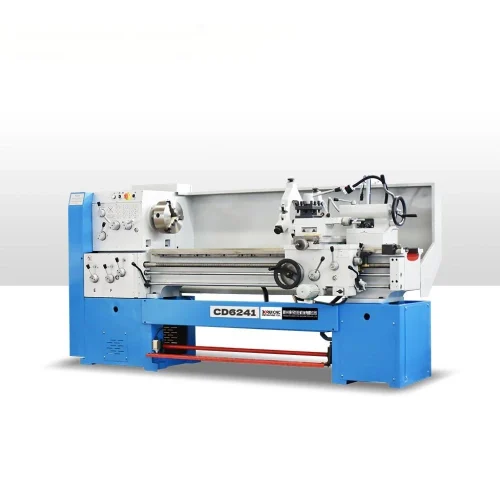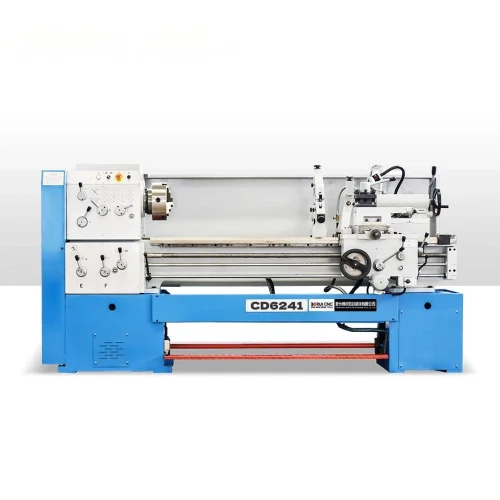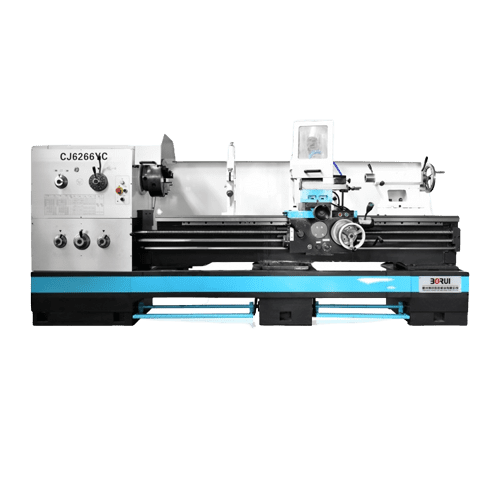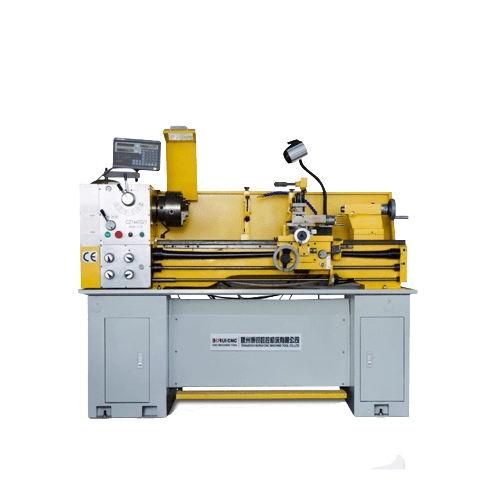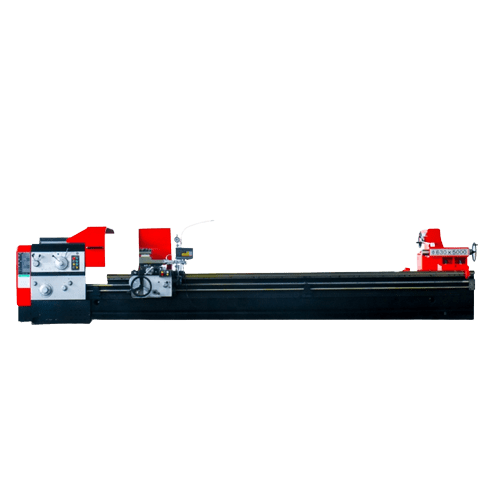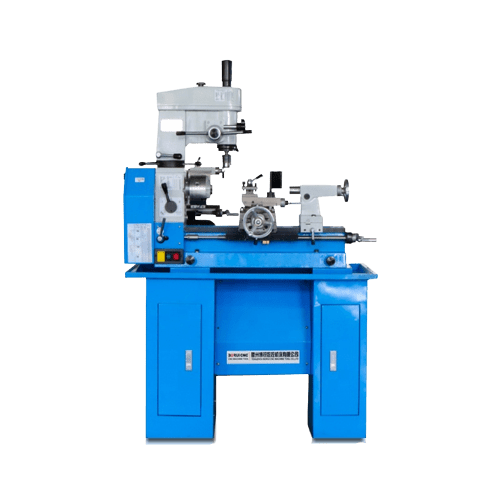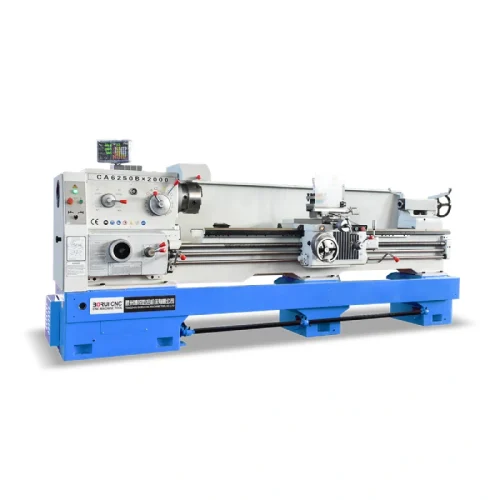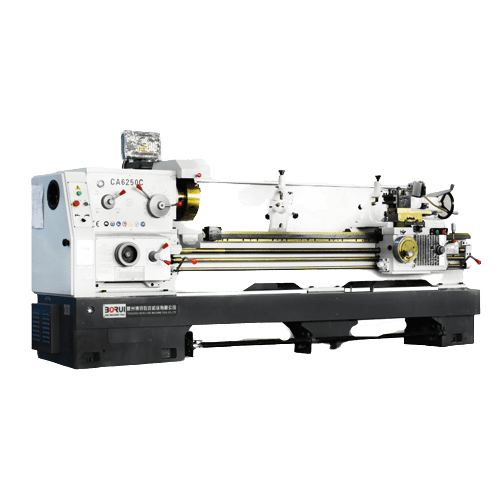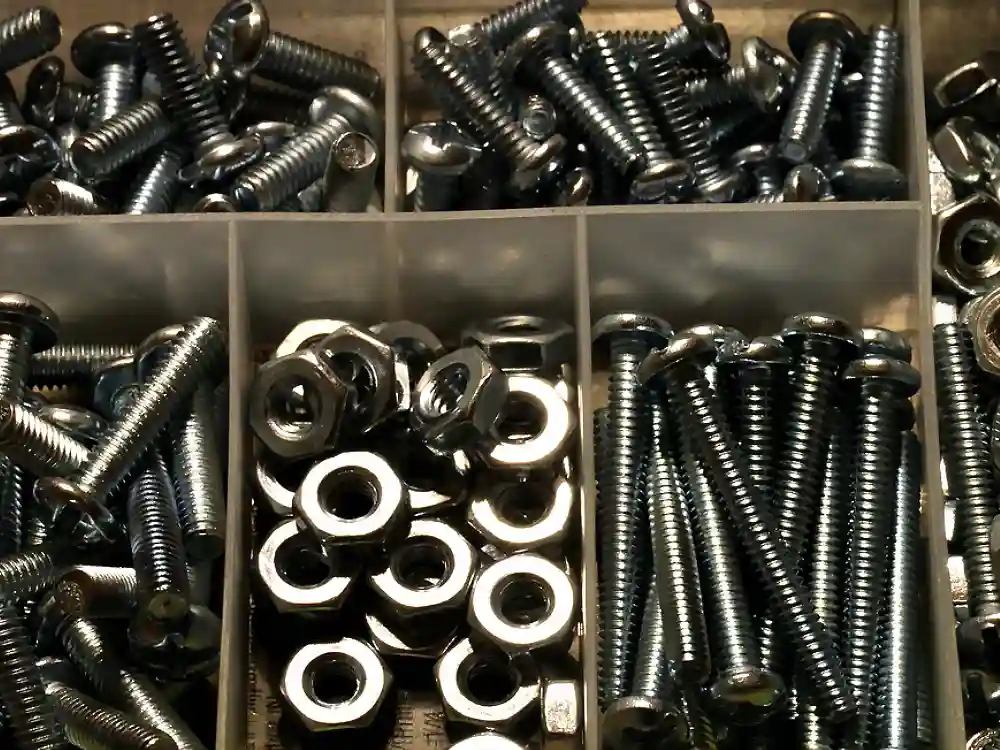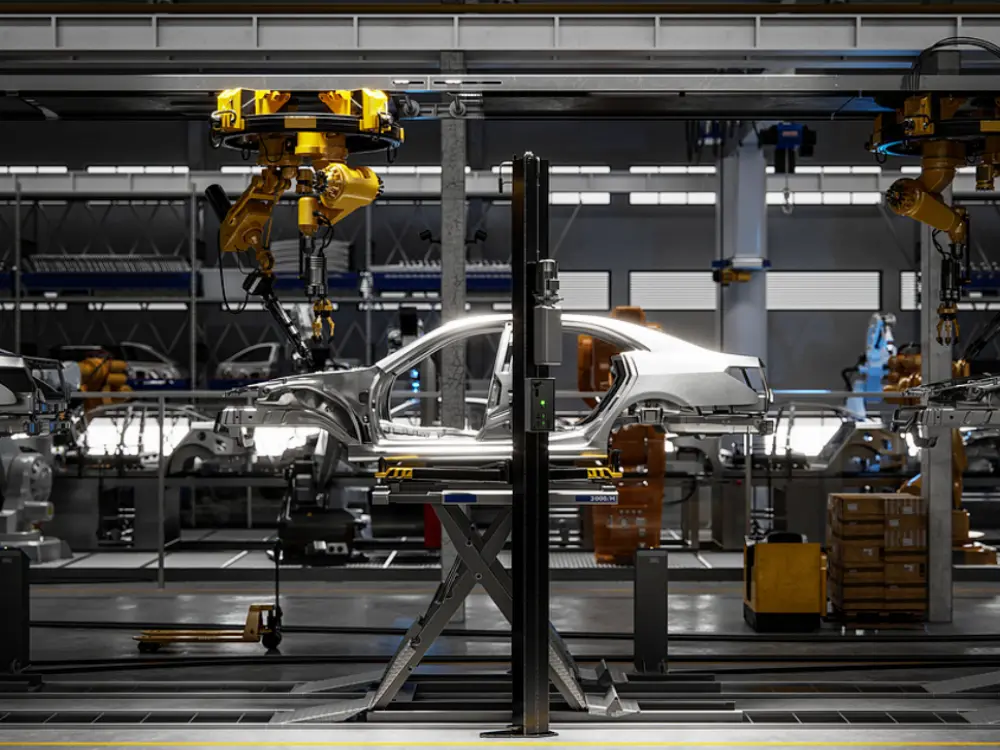Torno manual
BORUI se especializa en la fabricación de diversos tornos ordinarios pequeños, livianos y pesados, utilizando piezas fundidas de alta rigidez, rieles guía ensanchados y tornos manuales con mayor estabilidad.
¡Solicitar presupuesto!¿Cuáles son las ventajas de los tornos manuales BORUI?
Los tornos manuales BORUI representan la herencia y la innovación de la artesanía exquisita. En campos de alta precisión, como la fabricación de moldes, nuestros tornos manuales sobresalen. Tienen un gran control y estabilidad. Cada dispositivo se somete a un estricto control de calidad, lo que permite a los operadores alcanzar una precisión de procesamiento a nivel de micras. Ya sea un técnico experto o un fabricante de piezas, use los tornos manuales BORUI. Pueden hacer realidad sus sueños de procesamiento de precisión.
Funcionamiento sencillo
Las máquinas herramienta manuales son más fáciles de manejar que las CNC. Los usuarios solo necesitan dominar algunas habilidades básicas.
Fácil mantenimiento
Las máquinas herramienta manuales son fáciles de mantener. No tienen sistemas CNC, por lo que sus costes de mantenimiento son inferiores a los de las máquinas CNC.
Bajo coste de inversión
Las máquinas herramienta manuales son más baratas que las CNC. Se adaptan mejor a las pequeñas empresas.
Amplia gama de aplicaciones
Las máquinas herramienta manuales pueden trabajar con muchos materiales y procesos. Son mejores para trabajos personalizados y de lotes pequeños.
Áreas de aplicación de la máquina de torno manual
Aplicaciones básicas en la fabricación
En la industria manufacturera, los tornos manuales se utilizan ampliamente en electrónica, herramientas de ferretería, juguetes, plásticos y otras industrias. Su procesamiento preciso satisface los elevados estándares de estas industrias en cuanto a piezas.
Los tornos manuales pueden procesar con eficacia y precisión:
- Piezas cilíndricas (como ejes y engranajes)
- Caras extremas y superficies interiores (como manguitos de cojinetes y núcleos de válvulas)
- Superficies rotativas complejas (como cigüeñales y engranajes helicoidales)
- Piezas roscadas (como tornillos y tuercas)
Requisitos de procesamiento de alta precisión
Tanto los tornos manuales como los tornos CNC pueden alcanzar una gran precisión de procesamiento, y la tolerancia puede controlarse con un margen de más o menos 0,01 mm. Esta característica hace que los tornos manuales se utilicen ampliamente en campos con requisitos de precisión extremadamente altos, como la industria aeroespacial y los equipos médicos.
En el sector aeroespacial, los tornos manuales pueden procesar piezas complejas. Así se garantiza la calidad de aviones y satélites.
En la fabricación de dispositivos médicos, fabrican articulaciones artificiales y herramientas quirúrgicas de alta precisión.
Adaptabilidad de los materiales
Los tornos manuales pueden procesar metales comunes como hierro, cobre y aluminio. También pueden trabajar con más tipos de materiales, como el titanio. Esto ofrece a las distintas industrias una gran variedad de opciones de materiales.
Aplicación intersectorial
Además de los campos anteriores, los tornos manuales también son ampliamente utilizados en la fabricación de automóviles, fabricación de electrónica, construcción naval, industria militar y otras industrias. En la fabricación de automóviles, los tornos manuales procesan piezas clave, como las piezas del motor y la transmisión. En electrónica, fabrican piezas pequeñas y delicadas, como carcasas metálicas y conectores para teléfonos móviles y ordenadores.
Opiniones de los clientes

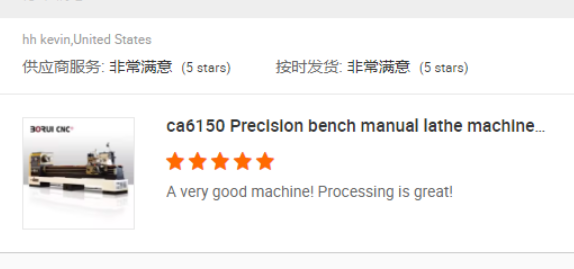
Preguntas frecuentes sobre los tornos manuales BORUI
Q1: ¿Cuál es el periodo de garantía de los Tornos Manuales BORUI?
A: Un año.
Q2: ¿Cuánta experiencia necesito para operar los Tornos Manuales BORUI?
A: Manejar un torno manual con destreza suele requerir entre 1 y 2 años de tiempo y acumulación de experiencia. Este proceso incluye el aprendizaje de conocimientos básicos, la práctica de operaciones sencillas, el procesamiento de piezas complejas, la operación independiente y la resolución de problemas, así como varias etapas de dominio y mejora.
En la etapa de aprendizaje de conocimientos básicos, es necesario dominar el funcionamiento del sistema CNC, los principios básicos de programación, la selección y utilización de herramientas, etc. Esta etapa suele durar unos 3 meses.
En la fase de práctica de operaciones sencillas, siga los procedimientos indicados para realizar algunas operaciones iniciales de procesamiento. Esto le ayudará a familiarizarse con el trabajo y a mejorar sus habilidades. Este proceso dura entre 3 y 6 meses.
Tras entrar en la fase de procesamiento de piezas complejas, hay que gestionar conocimientos de programación y disposiciones de proceso más complejos, lo que suele llevar entre 6 y 12 meses.
La etapa de funcionamiento autónomo y resolución de problemas es un punto de inflexión clave. Marca la transición de aprendiz a trabajador cualificado. Esta etapa dura entre 1 y 2 años.
Por último, para alcanzar el nivel de competencia, es necesario acumular experiencia y mejorar continuamente las habilidades, lo cual es un proceso continuo.
Q3: ¿Qué materiales pueden procesar los Tornos Manuales BORUI?
A: Los tornos manuales pueden procesar acero al carbono, hierro, latón, plástico, acero inoxidable, HDPE, ABS, PPS, bronce, aleación de titanio, aluminio, aleación de magnesio, PC, cobre rojo, PEEK, etc. Estos materiales pueden procesarse de varias formas en tornos manuales, como torneado, taladrado, escariado, etc.
Los tornos manuales se utilizan principalmente para procesar piezas giratorias, como ejes largos y piezas de eje corto. La rotación de la pieza y el movimiento lineal de la herramienta cortan la superficie cilíndrica.
Además, los tornos manuales pueden procesar superficies cónicas, superficies curvas y roscas. Puede conseguir diferentes resultados ajustando la rotación de la pieza y el movimiento de la herramienta.
En la industria de procesamiento de piezas mecánicas, algunos plásticos se adaptan a los tornos manuales. Entre ellos se encuentran el ABS, el nailon PA6, el nailon PA66, el PVC y el POM. Tienen buenas propiedades mecánicas y de procesamiento. Por eso se utilizan mucho en maquinaria, automóviles y electrónica.
P4: ¿Cómo realiza el mantenimiento diario de los tornos manuales?
A: El mantenimiento y cuidado de los tornos manuales incluye principalmente los siguientes aspectos:
- Mantenimiento de los carriles guía y los cojinetes Los carriles guía y los cojinetes son las piezas clave para el mantenimiento cuando el torno manual está en funcionamiento. Estas piezas deben limpiarse y lubricarse con frecuencia para garantizar su funcionamiento normal. Si los raíles guía o los cojinetes están dañados o hacen ruido, deténgase e inspeccione las piezas. Sustituya las que estén dañadas.
- Mantenimiento del sistema de accionamiento: Si el torno manual es accionado por engranajes, es necesario observar la suavidad durante el funcionamiento. Si hay sacudidas o sonidos anormales, puede haber daños o materias extrañas en el sistema de accionamiento, que necesita ser ajustado o limpiado a tiempo.
- Inspección y mantenimiento diarios: En el uso diario, compruebe que el torno manual funciona con normalidad. Escuche si se producen ruidos o vibraciones extrañas. Si se detecta alguna anomalía, tratarla inmediatamente. Además, se deben limpiar las limaduras de hierro de los raíles guía y de los mecanismos de transmisión para mantener limpio el equipo.
- Mantenimiento del sistema de lubricación Compruebe y añada regularmente aceite lubricante para garantizar una lubricación suave de todas las superficies deslizantes y las superficies de los carriles guía. Al mismo tiempo, compruebe el depósito de aceite y el nivel de aceite del mecanismo de transmisión para mantener el nivel de aceite en la elevación
- Inspección de las fijaciones: Compruebe y apriete regularmente las fijaciones del torno. Esto mantiene todas las piezas conectadas y evita un funcionamiento inestable debido a la holgura.
Las medidas anteriores pueden prolongar la vida útil del torno. También mejorarán la eficacia y la seguridad.
Q5: ¿Cuál es el tamaño máximo de procesamiento de los tornos manuales BORUI?
A: El diámetro máximo de procesamiento es de 400-800 mm, y la longitud máxima de procesamiento es de 750-3000 mm.
Guía de funcionamiento de la máquina de torno manual
Los pasos básicos del funcionamiento manual del torno incluyen: preparación antes del encendido, pasos de encendido, funcionamiento manual y precauciones.
- En primer lugar, la preparación previa al encendido es muy importante. Asegúrese de que la zona de trabajo esté limpia y ordenada. No debe haber residuos que obstaculicen el equipo.
- Compruebe que la toma de corriente cumple los requisitos del equipo. La tensión debe ser estable y no estar sobrecargada. Compruebe también si los cables y los enchufes están intactos. Utilice equipos de protección personal, como cascos de seguridad, gafas y tapones para los oídos.
- El siguiente paso es el encendido: en primer lugar, conecte la alimentación principal, busque el interruptor de encendido del torno CNC, que suele estar situado en la parte frontal o lateral del armario de control, y púlselo o gírelo suavemente hasta la posición "ON".
- Una vez encendida, el sistema inicia la autocomprobación y se muestra el progreso de la misma. Tras esperar a que finalice la autocomprobación, el sistema entra en estado de espera.
- A continuación, se introducen parámetros como el tamaño de la pieza, la herramienta, la velocidad de corte y la velocidad de avance. Algunos tornos CNC, especialmente las herramientas de corte de metal, pueden necesitar precalentamiento. Esto reduce el impacto de la deformación térmica en la precisión del mecanizado.
- Antes del procesamiento final, se realiza una comprobación manual. En ella se comprueba que los ejes de la máquina herramienta se mueven con normalidad, sin ruidos extraños ni vibraciones. Durante la operación manual, tenga en cuenta lo siguiente: En primer lugar, apague la máquina cuando observe y comprenda el torno. Al poner en marcha el torno, la rotación de avance, parada y retroceso se controla mediante la varilla de elevación. La palanca basculante ajusta la velocidad según el diagrama.
- Al realizar un corte lineal, la palanca de cambios controla las direcciones del eje Z y del eje X. Seleccione una velocidad de avance de corte adecuada, generalmente alrededor de 500 rpm, y la cantidad de avance es de alrededor de 0,12.
- Preste atención a la seguridad durante el procesamiento. Es mejor no llevar guantes para evitar peligros. Además, elija un fluido de corte adecuado. Prolongará la vida útil de la herramienta y mejorará la precisión.
- Por último, deben tenerse en cuenta las siguientes precauciones de seguridad al utilizar un torno manual: Utilizar gafas durante el corte para evitar que los residuos entren en los ojos. Elija el fluido de corte y las herramientas adecuadas para garantizar la calidad del procesamiento.
Operar según la experiencia. Aunque calcular las condiciones de procesamiento es importante, la experiencia también es indispensable. No lleve guantes cuando trabaje. Pueden introducir residuos en el torno y causar peligro.
Los tornos manuales ofrecen sugerencias de mantenimiento
El mantenimiento y cuidado de los tornos manuales incluye principalmente los siguientes aspectos:
Mantenimiento de guías y rodamientos:
Cuando el torno manual está en funcionamiento, los raíles guía y los cojinetes son las piezas clave para el mantenimiento. Estas piezas deben limpiarse y lubricarse con frecuencia para garantizar su funcionamiento normal. Si los raíles guía o los cojinetes están dañados o hacen ruido, deténgase e inspeccione las piezas. Sustituya las que estén dañadas.
Mantenimiento del sistema de propulsión:
Si el torno manual es accionado por engranajes, es necesario observar la suavidad durante el funcionamiento. Si hay sacudidas o sonidos extraños, la transmisión puede estar dañada o tener residuos. Es necesario ajustarlo o limpiarlo a tiempo.
Inspección y mantenimiento diarios:
En el uso diario, debe comprobar si todas las piezas del torno manual funcionan con normalidad y si hay ruidos o vibraciones anormales. Si se detecta alguna anomalía, solucionarlo inmediatamente. Además, las limaduras de hierro de los carriles guía y el mecanismo de transmisión deben limpiarse regularmente para mantener el equipo limpio.
Mantenimiento del sistema de lubricación:
Compruebe y añada regularmente aceite lubricante para garantizar una lubricación suave de todas las superficies de deslizamiento y de los carriles guía. Al mismo tiempo, compruebe el depósito de aceite y el nivel de aceite del mecanismo de transmisión para mantener el nivel de aceite en la elevación.
Inspección de sujetadores:
Compruebe y apriete regularmente las fijaciones del torno. Esto evitará un funcionamiento inestable debido a la holgura.
Las medidas anteriores pueden prolongar la vida útil del torno manual. También pueden mejorar la eficacia y la seguridad del trabajo.

